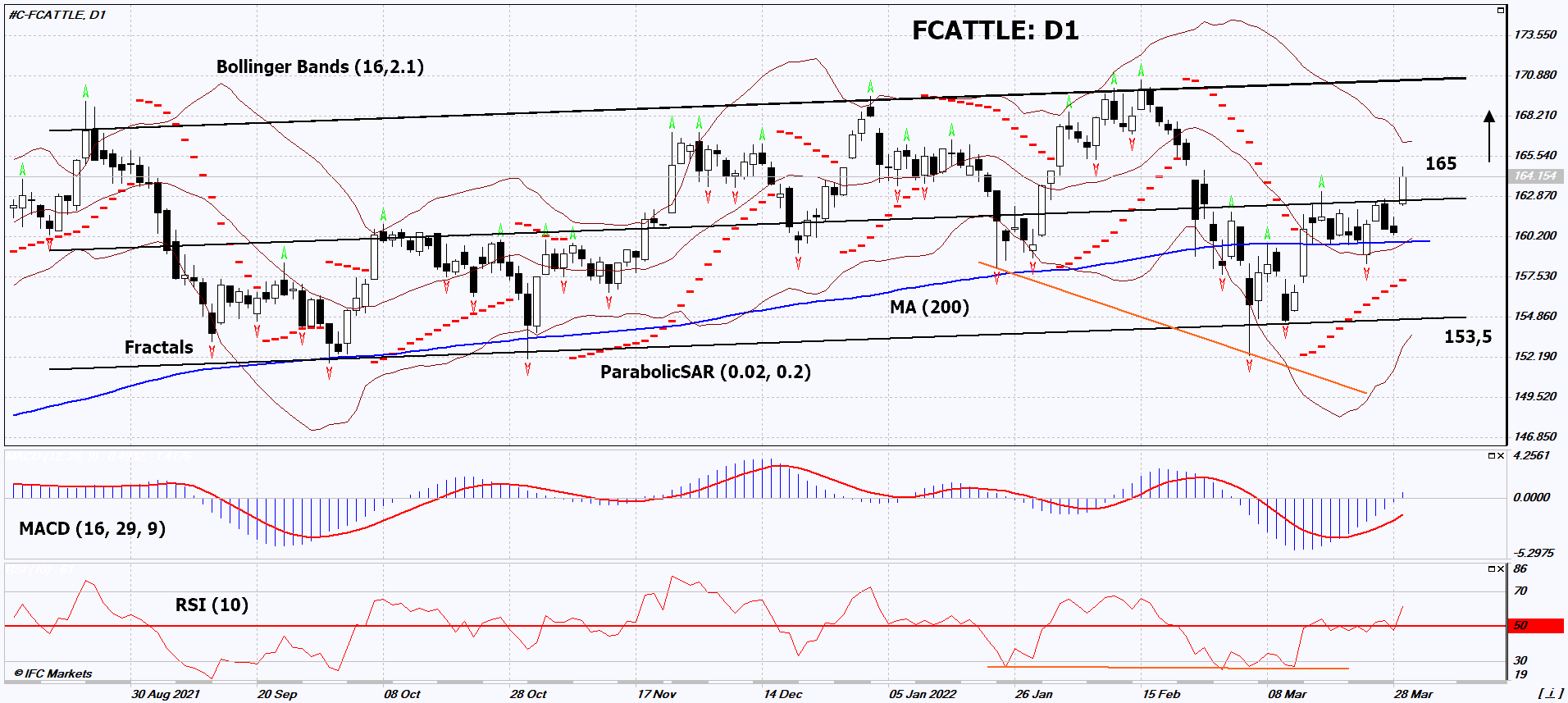Feeder Cattle Technical Analysis Summary
Buy Stop։ Above 165
Stop Loss: Above 153,5
| Indicator | Signal |
|---|---|
| RSI | Neutral |
| MACD | Buy |
| MA(200) | Neutral |
| Fractals | Buy |
| Parabolic SAR | Buy |
| Bollinger Bands | Neutral |
Feeder Cattle Chart Analysis

Feeder Cattle Technical Analysis
On the daily timeframe, FCATTLE: D1 is in the long-term neutral trend. It is moving towards its upper border. A number of indicators of technical analysis formed signals for further growth. We don’t rule out a bullish movement if FCATTLE: D1 rises above its latest high of 165. This level can be used as an entry point. Initial risk cap is possible below the 200-day moving average, the last two down fractals, the Parabolic signal, and the lower Bollinger band: 153.5. After opening a pending order, we move the stop following the Bollinger and Parabolic signals to the next fractal minimum. Thus, we are changing the potential profit/loss ratio in our favor. The most cautious traders after making a trade can go to the four-hour chart and set a stop-loss, moving it in the direction of movement. If the price overcomes the stop level (153.5) without activating the order (165), it is recommended to delete the order: the market is experiencing internal changes that were not taken into account.
Fundamental Analysis of Commodities - Feeder Cattle
U.S. beef production is growing faster than the number of cattle. Will the FCATTLE quotes continue to rise?
According to the United States Department of Agriculture (USDA), U.S. Beef production was 2.25 billion pounds in February 2022, up 7% from February last year. 2.69 million heads of cattle were slaughtered for meat (+6% yoy). At the same time, as of March 1, 2022, there were 12.2 million cows and calves on feedlots in the United States (Cattle and calves on feed). This is only 1% more than on 1 March 2021. Theoretically, such a discrepancy between production and stocks could indicate an increase in demand for US beef. On Monday, March 29, 124 thousand cows were slaughtered in the USA. This is 5,000 more than last Monday and 7,000 more than a year ago on the same date. In addition to all this, it can also be noted that the cost of cattle in the feedlots (Feeder Cattle) is now at the level of August last year. During this time, feed grain prices have risen by almost 40%.